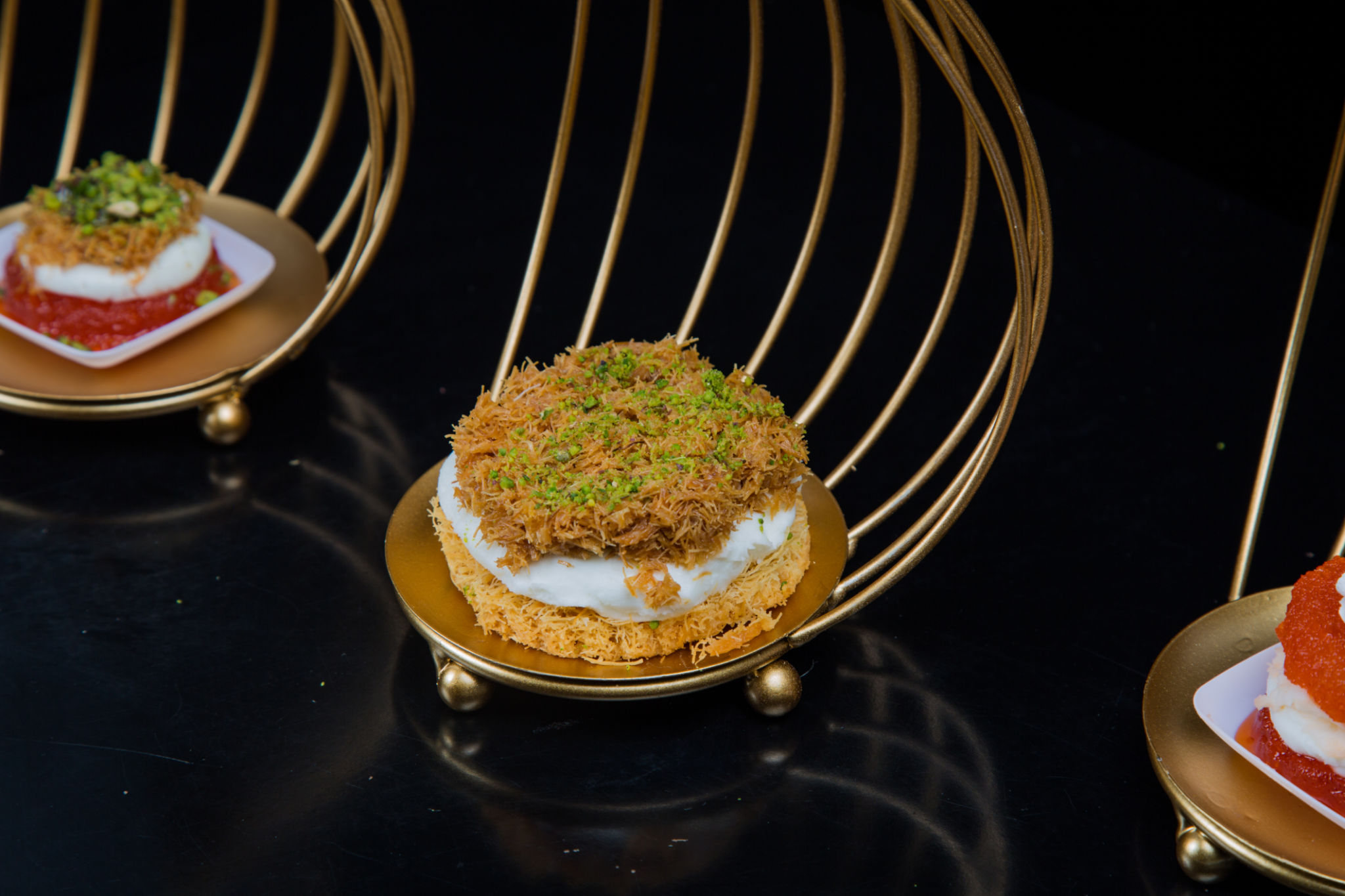Exploring the Cultural Significance of Kunafeh
Introduction to Kunafeh
Kunafeh, a delectable dessert that has captured the hearts and taste buds of many, holds a special place in the culinary traditions of the Middle East. It is a dessert that combines textures and flavors in a way that is both unique and comforting. Known for its crispy exterior and gooey, cheesy interior, kunafeh offers a sensory experience that is hard to forget.
The origins of kunafeh are deeply rooted in the cultures of countries like Palestine, Jordan, Lebanon, and Turkey. Each region puts its own spin on the recipe, but the core elements remain the same—shredded phyllo dough or semolina, sweet syrup, and a filling of cheese or cream.

The Historical Roots of Kunafeh
The history of kunafeh stretches back centuries and is intertwined with the rich tapestry of Middle Eastern history. It is believed that kunafeh originated in the Levantine region, with recipes passed down through generations. Some historical accounts suggest that it was created during the Fatimid Caliphate as a dish to sustain people during fasting periods.
Kunafeh has not only survived but thrived over the years, evolving and adapting to modern tastes while retaining its cultural essence. It is often prepared during special occasions and festivals, symbolizing hospitality and celebration.
Regional Variations
While the basic components of kunafeh remain consistent, regional variations add a delightful diversity to this dessert. In Palestine, it is made with nabulsi cheese, while in Turkey, it often features a thicker layer of dough with pistachios sprinkled on top. Each version tells a story of its own, reflecting local ingredients and culinary practices.

The Cultural Significance of Kunafeh
Kunafeh is more than just a sweet treat; it is a symbol of cultural identity and pride for many Middle Eastern communities. Sharing kunafeh is an act of bringing people together, whether it be family gatherings or social events. It is a dessert that transcends borders and brings a sense of unity among those who share in its enjoyment.
In many households, making kunafeh is a cherished tradition passed down from one generation to the next. The process of preparing kunafeh is often a communal activity, bringing families together in the kitchen to create this delectable dish.
Kunafeh in Modern Times
Today, kunafeh has garnered international attention, finding its way into restaurants and bakeries around the world. As global interest in Middle Eastern cuisine grows, kunafeh stands out as a must-try delicacy. Its unique combination of sweet and savory elements appeals to diverse palates, making it popular beyond its native regions.

How to Enjoy Kunafeh
Enjoying kunafeh requires little more than an appreciation for its rich flavors and textures. Traditionally, it is served warm, allowing the cheese to melt perfectly and blend with the sweet syrup. It pairs wonderfully with a cup of Arabic coffee or tea, enhancing the overall experience.
For those looking to make kunafeh at home, several recipes are available that cater to different tastes and preferences. Whether you prefer it with cheese or cream, with pistachios or walnuts, making kunafeh can be a rewarding culinary adventure.
Conclusion
Kunafeh's cultural significance extends beyond its delightful taste. It is a dessert that embodies tradition, history, and community spirit. Whether enjoyed in the heart of the Middle East or in a bustling city café across the globe, kunafeh offers a slice of cultural heritage in every bite.
As you savor kunafeh, remember that you are not just indulging in a sweet treat; you are partaking in a tradition that has brought joy and togetherness to countless people over the centuries.
